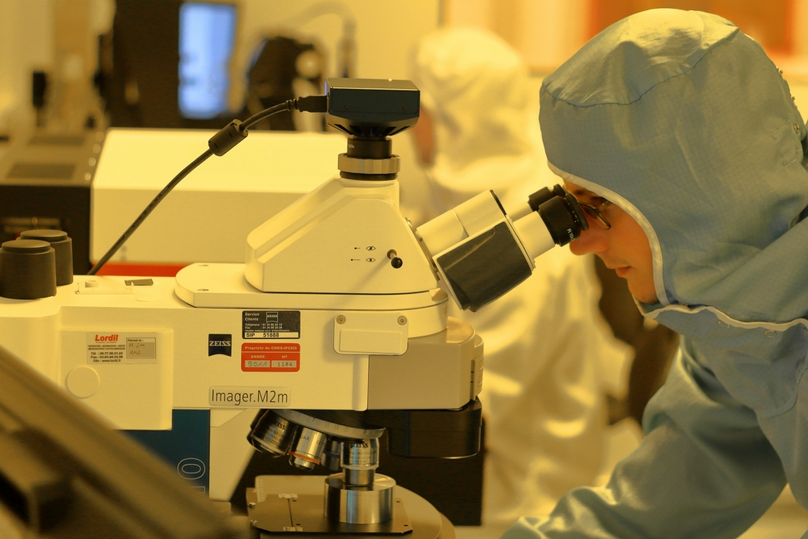Understanding histones is crucial to unraveling the secrets of gene expression. Histones are like the librarians of our genetic information, packaging and organizing DNA in the cell nucleus. They play a pivotal role in controlling which genes are active and which remain silent. The interaction between histones and DNA determines the accessibility of genes, ultimately influencing various biological processes. The structure of histones is designed to interact with the negatively charged DNA molecules. Histones are organized into octamers, around which DNA is wound to form nucleosomes. Nucleosomes serve as the fundamental repeating units of chromatin. They are not just passive scaffolds; they also provide a regulatory platform for gene expression. The way DNA is wound around histones determines its accessibility for transcription. Therefore, histones not only have a role in DNA packaging but also act as gene expression regulators.
But how do histones tie into the world of biopharma research, and what impact do they have on the productivity of research teams seeking to enhance gene expression for therapeutic advancements?
Genemod: Empowering Biopharma Research with Histone Insights
Genemod recognizes the importance of histones in the context of biopharma research. Our automation and efficiency solutions are designed to empower research teams by providing insights into histone-related gene expression. By automating experiments and streamlining data analysis, Genemod enables scientists to delve deep into the nuances of histone modifications. We help biopharma startups, academia, non-profits, R&D teams, managers, and admins unlock the potential of histones to drive gene expression studies. With Genemod's support, researchers can work collaboratively on big ideas without being bogged down by the intricacies of histone research, accelerating life sciences R&D in the process.
The Role of Histones in Packaging DNA
Histones excel in their primary role of packaging DNA efficiently and preserving its structural integrity. They achieve this by tightly winding DNA around histone octamers, forming nucleosomes. This compact organization of DNA ensures that genetic material remains stable and protected within the cell nucleus. Moreover, it plays a pivotal role in controlling gene expression.
By adjusting the degree of DNA winding around histones, cells can control which genes are accessible for transcription. When DNA is loosely wound around histones, it is more accessible, allowing for gene transcription to occur. Conversely, when DNA is tightly wrapped, it becomes less accessible, resulting in gene silencing. This dynamic packaging and accessibility regulation are fundamental mechanisms in gene expression and, consequently, cellular function.
Histone Modifications and Gene Regulation
Histones undergo a multitude of chemical modifications that impact their interaction with DNA and influence gene regulation. These modifications include acetylation, methylation, phosphorylation, and more. For example, histone acetylation often leads to more accessible DNA, promoting gene transcription, while histone methylation can have various effects depending on the specific modification and context. These histone modifications act as epigenetic marks that help determine whether a gene is active or silenced.
Gene Expression and Histone Modifications
The relationship between gene expression and histone modifications is at the heart of understanding how our genes function and respond to various cellular signals. Gene expression refers to the process by which information encoded in our DNA is converted into functional proteins or RNA molecules. Histone modifications play a pivotal role in regulating this process by controlling the accessibility of genes for transcription. When specific chemical modifications are added to histones, they can either promote or inhibit gene expression. For instance, histone acetylation is often associated with active gene expression, as it relaxes the chromatin structure, making it easier for the transcription machinery to access and read the DNA. Conversely, histone methylation can have variable effects, depending on the specific histone and modification involved.
Techniques for Studying Histone Modifications
The study of histone modifications requires a range of sophisticated techniques to identify and characterize the specific modifications occurring at various histone residues. Mass spectrometry, for example, allows researchers to analyze histone proteins precisely and pinpoint the locations and types of modifications present. Chromatin immunoprecipitation (ChIP) is another valuable technique that involves the selective enrichment of DNA fragments associated with specific histone modifications. This method enables researchers to identify genomic regions where specific histone modifications are enriched, shedding light on their regulatory roles.
Clinical Implications and Disease Associations
The study of histone modifications has profound clinical implications, as aberrant histone modifications are often associated with various diseases, including cancer, neurological disorders, and autoimmune conditions. Dysregulated histone modifications can lead to abnormal gene expression patterns, contributing to disease initiation and progression. For instance, histone deacetylase inhibitors (HDACIs) have emerged as promising therapeutic agents for cancer treatment by targeting histone deacetylase enzymes responsible for removing acetyl groups from histones, thus altering gene expression.
Take Control of Gene Expression
Are you part of a biopharma research team aiming to decipher the role of histones in gene expression? Let Genemod be your partner in this exciting journey. Our automation and efficiency solutions are tailored to help you streamline experiments, manage inventory effectively, and improve collaboration while focusing on histone-related research. Visit Genemod today and take control of your research for a brighter future in life sciences R&D.















